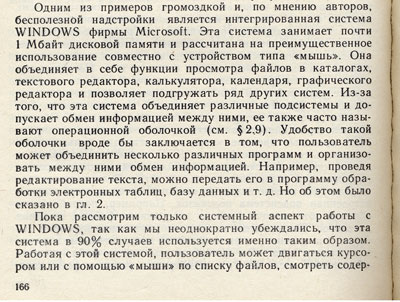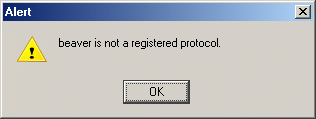I see that a lot of people add “programming” tag to my blog in del.icio.us. And as they might have noticed, there are very few posts about computers and programming in this blog. So far, my favorite note in del.icio.us is “a NY programmer, I guess, doing you know, stuff”. Anyway, here is an exclusion from the rule, a post about computer technology.
There’s a computer book that I was looking for for a long time. I remember having it in my dad’s library, but it probably was left behind. I finally found a source of used books in Russia, alib.ru, so I finally replaced it.
“Personal Electronic Calculating Machines in Engineering Practice” by Krenkel, Kogan and Taratorin, Moscow 1989, Radio and Communications. I mostly bough it for a certain infamous passage attributed to Dr. Taratorin, a fellow immigrant and Livejournal deserter. If you can read Russian, here is a collection of his prose(he is extremely talented) and here is his blog.

So, let’s see, it’s 1989. Dr. Taratorin is writing these immortal words (my translation follows):

“One example of unwieldy, and in authors’ opinion useless add-ons is integrated WINDOWS system by Microsoft. The system takes up almost 1 Megabyte of disk space and was designed primarily to be used with devices of “mouse” type . It unites in itself functions of a file catalog browser, text editor, calculator, calendar, graphics editor and allows to load different other applications . Because this system integrates different subsystems and allows data passing amongst them it’s often called operating system wrapper (see paragraph 2.9). It seems that the usefulness of such wrapper in the ability of the user to load a few different programs and organize data sharing amongst them. For instance, after editing a text, you can pass it to an electronic table editing program (translator’s note: I think the word “spreadsheet” did not enter Russian vocabulary back then), database, etc.
…
Work with WINDOWS, of course, is rather impressive: during waiting (subsystem loading, file writing) a symbol of waiting, hourglass, appears on the screen, during file erasing a picture of a trashcan appears, backgrounds and font colors change, helper windows overlap, etc. In our opinion, the symbol of extreme esthetism and unwieldiness is the time-telling subsystem. When invoked, this system shows a pretty clock with familiar clock face and moving hands… But you always have to pay for prettiness. In WINDOWS system the price is long wait times for switching between applications, bloatedness of switching constructs (translator’s note: no idea) and large amount of memory needed from the Electronic Calculating Machine.”
Ahh, nice vintage Windows bashing. Warms my heart.









